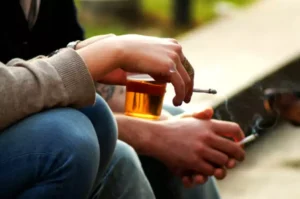
When it comes to keeping your addiction recovery on track, there can be no half-measures. It’s not like cheating on a diet because it’s the weekend or you can just tack on some extra fitness. For individuals with substance use disorders, there is no safe amount of an addictive substance to use. It is essential for individuals and their support networks to recognize early signs of relapse and intervene promptly.
Tolerance Build-up
Its key characteristics can range from regular substance use to cravings and dependence, severe effects, loss of control, risky behavior, tolerance, social isolation, physical and mental health decline, etc. Relapse is a common occurrence on the path to recovery, affecting between 40 to 60 percent of individuals who receive treatment for substance use disorders. However, it is important to understand that relapse is not a sign of failure but rather a detour on the journey towards sobriety.

The Impact of Addiction on Career and Financial Stability

Others may relapse a few times before they are finally able to stop using and remain in active recovery. Drugs interfere with the way neurons send, receive, and process signals via “neurotransmitters.” Some drugs, like cannabis and heroin, will attach to and choose the correct cycle of addiction. activate the neurons. Although these drugs mimic the brain’s own chemicals, they lead to abnormal messages being sent through the network.
What Are the Physiological Effects That Addiction Causes?

Working with a therapist, you can identify where your recovery went off track and why. It’s important to understand where the pitfall occurred so you can avoid it in the future. Unfortunately, if the individual doesn’t get their recovery back on track at this point, their relapse can progress to the mental stage of relapse. However, individuals must be able to identify when they’re in this phase. It can be too easy to justify not going to recovery meetings because you’re having a stressful week at work.
Finding the Right Alcohol Rehab for Women
The stages of the addiction cycle are based on research from the Substance Abuse and Mental Health Services Administration (SAMSHA), which identified the areas of the brain where these stages occur. Neuroscientific research provides insights into the brain changes that underpin addiction, highlighting alterations in brain systems such as reward, stress, and self-control. These changes explain the intense cravings and impaired ability to resist the drug, drug addiction treatment features that are central to addiction (Volkow et al., 2016). Once addiction develops, the individual’s ability to voluntarily cease drug use becomes severely compromised, reflecting the powerful nature of these brain adaptations. Resistance is a term often confused with tolerance but specifically relates to the ability of microorganisms or tumor cells to withstand the effects of a drug that would typically be effective against them. This is most commonly observed in the fields of oncology and infectious diseases, where the effectiveness of treatment diminishes as the targeted cells develop mechanisms to counteract the drug’s effects.
Social triggers
- People who abuse alcohol get into trouble but the consequences of such trouble can greatly determine whether an individual suffers from alcoholism or from alcohol abuse.
- Instead, look for ways that you can get the help that you need to get back on the right track.
- Individually, someone not abusing drugs or alcohol could present one of these symptoms.
- Many rehabs also have strong alumni communities with events, 12-Step groups, and more to keep patients connected and supported long after they leave treatment.
- In general, experiencing 2-3 of these symptoms is considered a mild substance use disorder.
- Additionally, certain places that remind you of your addiction can be triggers, too.
The primary goal of MAT is to stabilize patients, reduce withdrawal symptoms, and curb cravings, which can significantly improve recovery outcomes and reduce the risk of relapse. Understanding these stages is crucial for early intervention and effective treatment. Each stage presents unique challenges and requires tailored strategies for recovery. Recognizing the signs early can lead to more successful outcomes and help individuals avoid the severe consequences of advanced addiction. Understanding these psychological aspects is vital for developing effective therapeutic interventions and supporting individuals on their journey toward recovery.
Virtual IOP for Mental Health: Overcoming Stigma Through Online Support
Over time, this abuse can lead to physical and psychological dependence, making it increasingly difficult to quit without professional help. Given its chronic and relapsing nature, addiction often requires a multi-faceted treatment approach. This can range from medical interventions like detoxification and medication-assisted treatment to behavioral therapies and long-term aftercare in an outpatient setting, even once sobriety is achieved. Even in the recovery stage, ongoing maintenance treatment is essential to manage cravings, prevent relapse, and address any co-occurring mental health conditions.
This understanding can help tailor interventions that target the specific physiological adaptations unique to each individual’s experience with addiction. Passing thoughts of using drugs and/or alcohol again are normal during early recovery and are not the same as mental relapse. Regardless, sharing openly about the experience with others in recovery is crucial. Many individuals in early recovery end up hiding thoughts and emotions pertaining to drinking and/or using due to shame and disappointment in oneself. However, it is secrecy around these thoughts and emotions, not the thoughts and emotions themselves, that often result in relapse. Lionel is the Clinical Director of Cornerstone’s Scottsdale treatment facilities.
Mental Relapse

It’s not always straightforward identifying triggers as they don’t always have a direct physical effect on the body. While some people may suffer from a seemingly endless series of triggers, others get away with fewer triggers for cravings. If you fail to address cravings, they can become almost impossible to shake.
